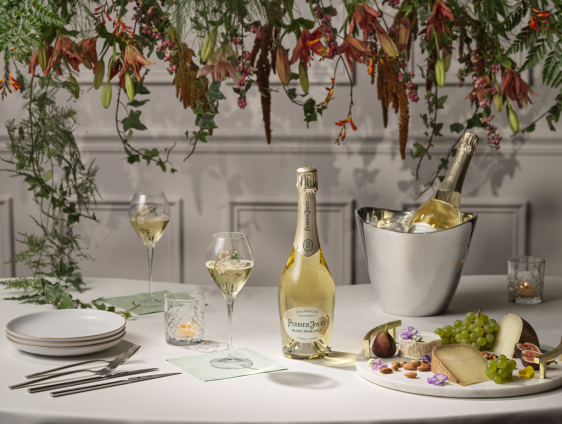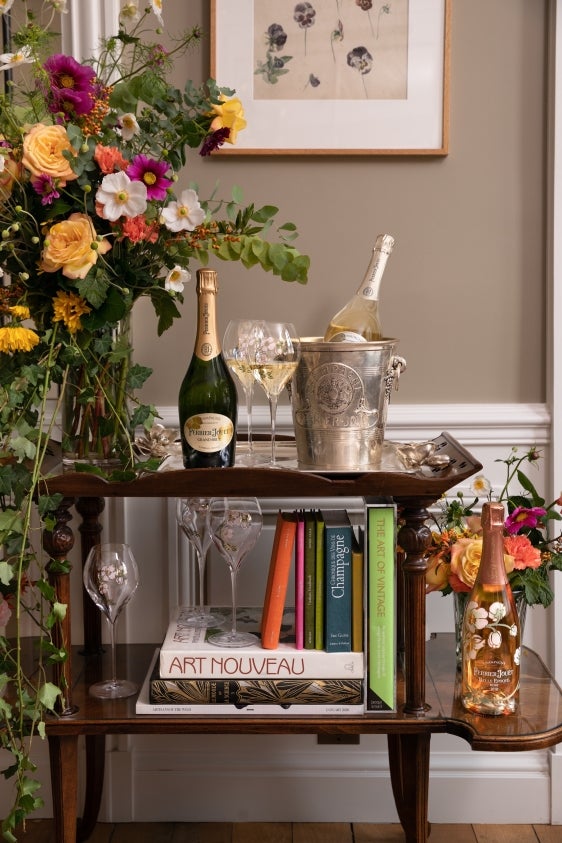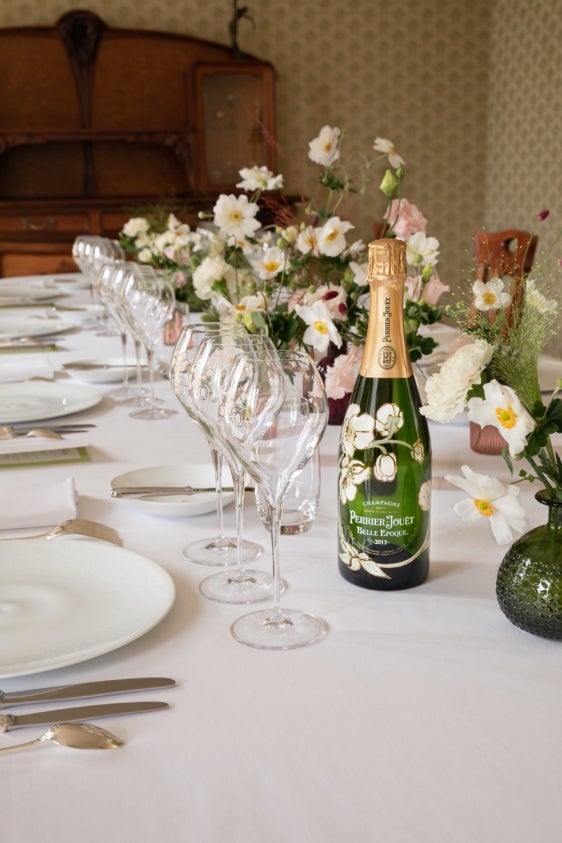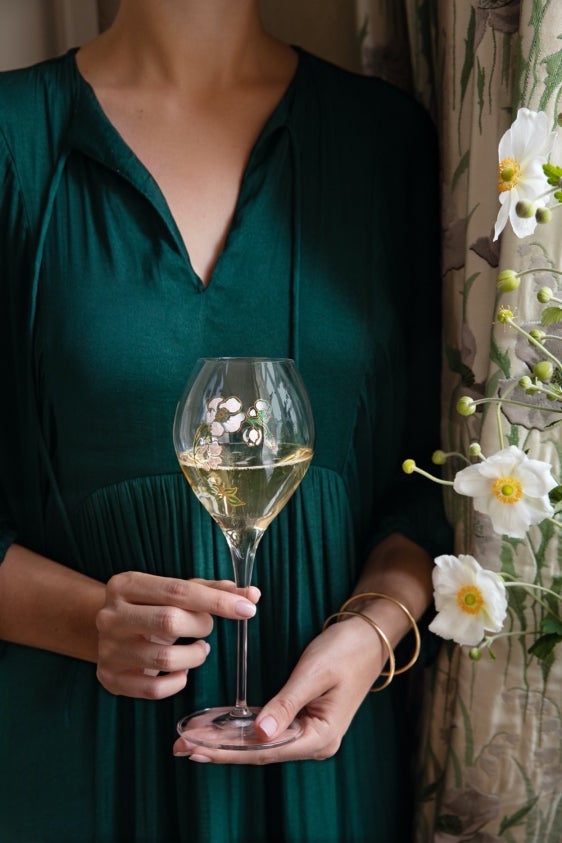
The Ritual of Serving Champagne
The technique of serving champagne is unique and iconic, much like a choreographed dance. Follow along as Sebastien Lebon, host of Maison Belle Epoque, shares his expert tips on setting an elegant and enchanting stage for serving Perrier-Jouët cuvées.


How to serve champagne
Each sip of sparkling champagne is a moment to be savored. Coming together with friends and loved ones over a glass of glimmering bubbles is a joyful celebration, and with a few expert tips you can explore the art of hosting to make your next gathering one to remember. What should you keep in mind?
- The perfect temperature: a non-vintage Perrier-Jouët champagne is ideally served at 8º C, while a vintage cuvée is best served at 10º C to reveal its full complexity.
- Never freeze your bottle to chill it. This can be dangerous, and will affect the wine’s delicate aromas.
- When opening your bottle, the goal is not to surprise, but to delight guests with a light sound, almost a sigh as the bottle is opened. This is achieved by gently turning the bottle, while firmly holding the cork.
- The bottom of the bottle should be held when pouring, ensuring the label is always facing your guests.
Setting the Perfect Table
An exceptional gastronomic moment begins with an enchanting table setting. From the placement of each glass, to the folding of the napkins to elements of decor, every detail comes together to elevate the dining experience. Explore how to set the perfect table with expert advice from Sebastien Lebon to help you create a moment to remember.


Designing Your Table
The Art of Hosting is a gift, providing exceptional experiences for your guests. Here we take you through setting the stage for gastronomic delight with a stylishly curated table.
- The table setting always begins with an impeccably ironed white tablecloth.
- Seating can be arranged starting from the middle of the table. The chairs should be placed first.
- The glasses serve as points of reference to help you achieve perfect alignment when the table is set. Each glass should be placed above the serving plate, in symmetry with the glasses opposite.
- To place items at the correct distance, ensure a small space the width of a finger is left between items.
- Cutlery should be arranged in order of using and according to the dishes being served with forks on the left and knives and spoons on the right.
- You can bring elegance to your table setting with a unique napkin fold and floral decorations to adorn the table and offer a connection to nature.
Savoring Your Champagne
Tasting champagne is an immersive experience, awakening the senses with each step of this enchanting ritual. Reveal the intricacies of a champagne’s personality with our expert recommendations


How to taste champagne
Dazzling and bright, the first sip of champagne dances on the palate, awakening the senses with its delightful effervescence. Tasting champagne is an art form, inviting you to savor the delicate aromas and lively flavors. Discover this unique ritual with expert tips from Sebastien Lebon, host of Maison Belle Epoque, to help you create the best tasting conditions for every glass.
- There are three stages of tasting: the robe, the nose and the palate.
- Start your tasting experience by describing the robe, or color, of the champagne and its effervescence: are the bubbles small? Is the color bright?
- Hold your glass of champagne by stem versus the bowl, to ensure the warmth of your hand does not transfer to the wine.
- The best glass in which to taste champagne should closely resemble that of a wine glass.
- Once served, smell the champagne to explore its primary bouquet. Swirl the glass delicately to provide some aeration, and smell again to dive deeper into the aromas of the wine.
- Finally, it's time to taste! The trick is to take in a trickle of air with the first sip to take in the full expression of the wine.




